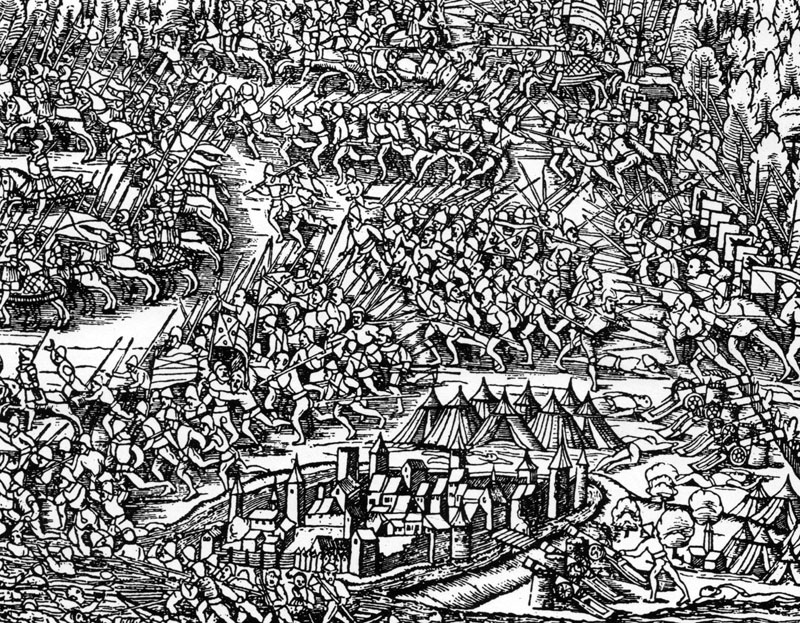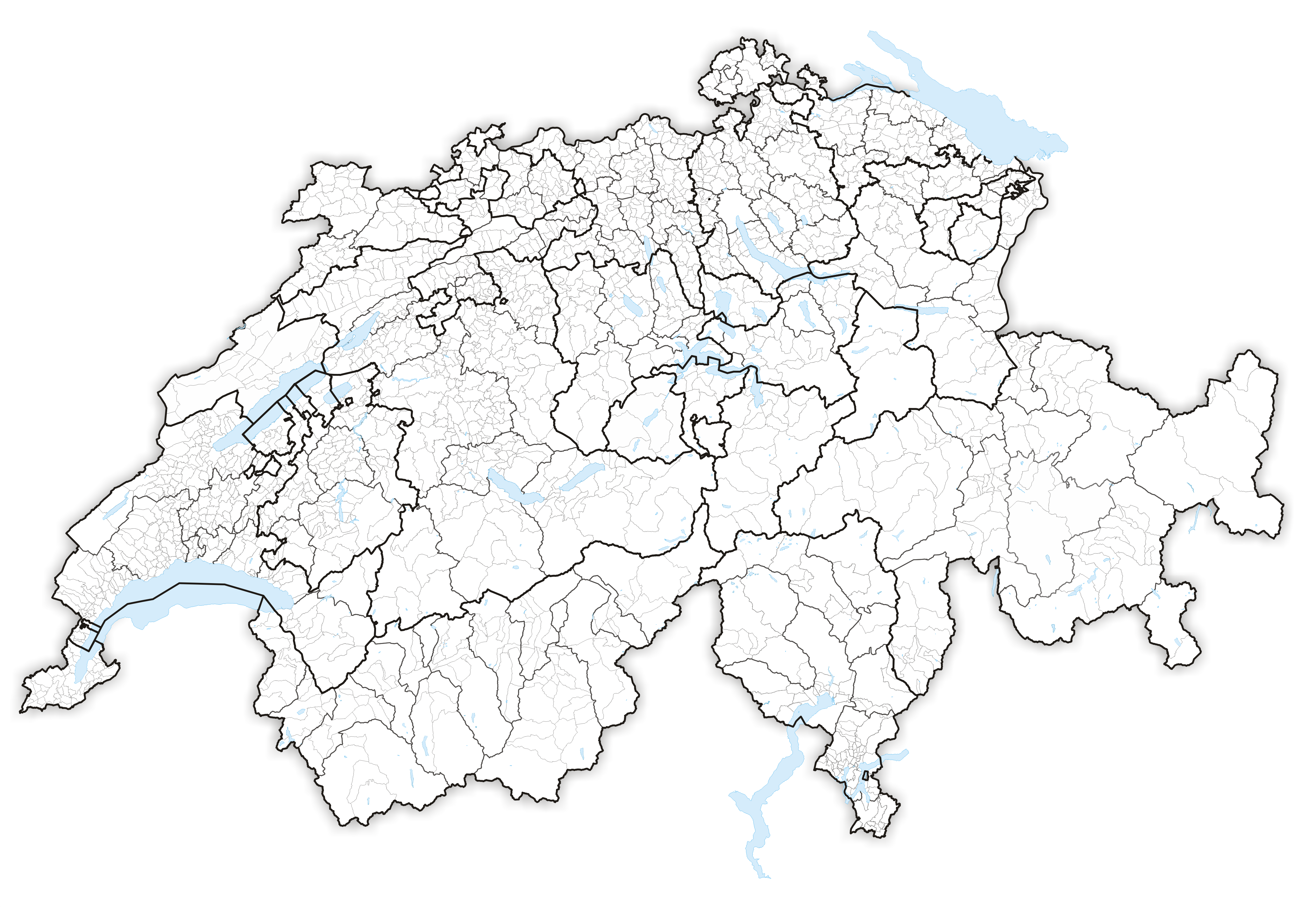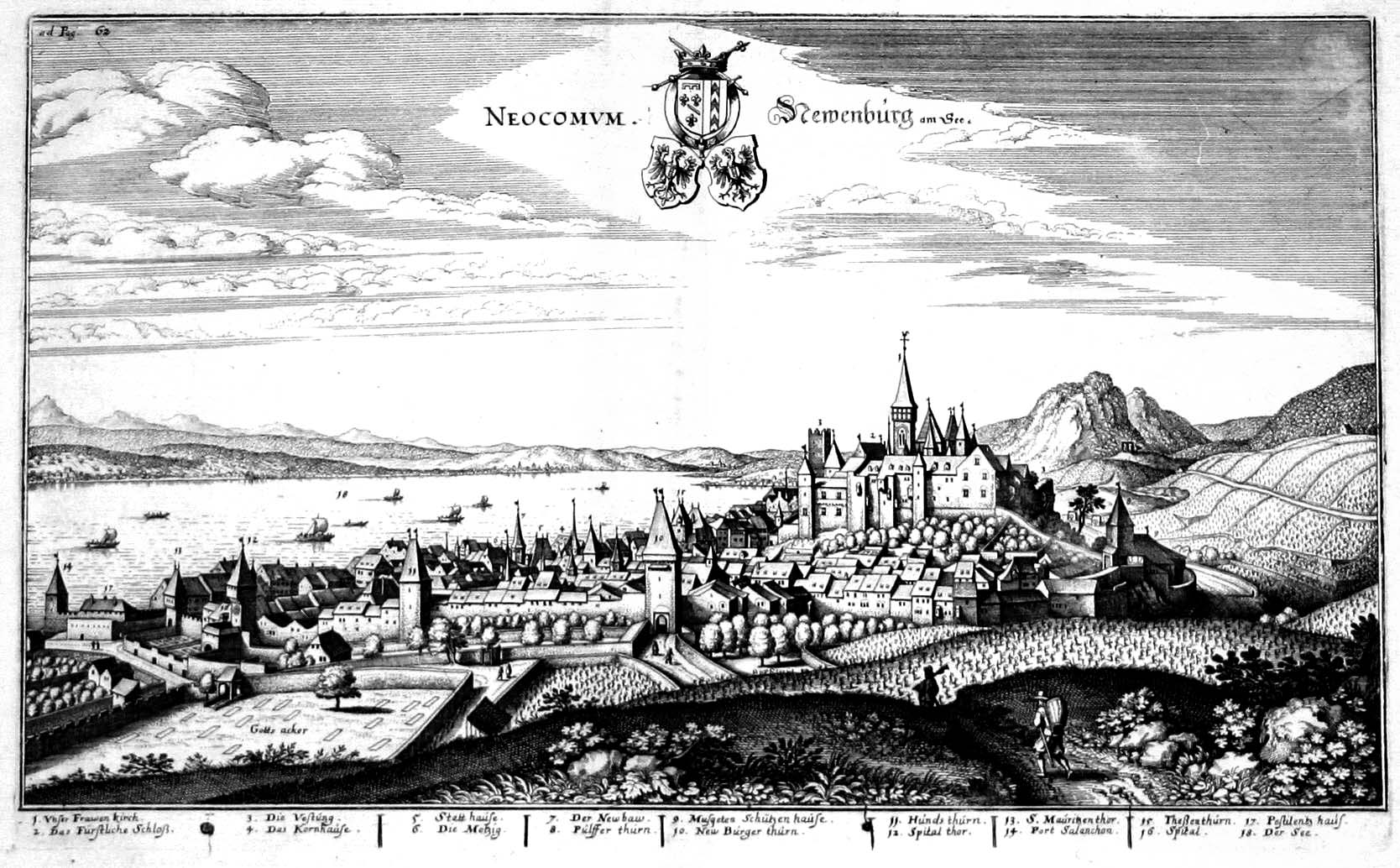|
Morat (Fribourg)
Murten (German) or Morat ( French, ; frp, Morât ) is a bilingual municipality and a city in the See district of the canton of Fribourg in Switzerland. It is located on the southern shores of Lake Morat (also known as Lake Murten). Morat is situated between Neuchâtel and Fribourg and is the capital of the See/Lac District of the canton of Fribourg. It is one of the municipalities with a majority (about 75%) of German speakers in the predominantly French-speaking Canton of Fribourg. On 1 January 1975 the former municipality of Burg bei Murten merged into the municipality of Murten.Nomenklaturen – Amtliches Gemeindeverzeichnis der Schweiz accessed 9 February 2013 It was followed on 1 January 1991 by the former municipality of |
See (district Of Fribourg)
See or Lac District (german: Seebezirk, french: District du Lac) is one of the seven districts of the canton of Fribourg in Switzerland. Lying to the north of the canton, the district is bilingual ( French/German). Its territory enclaves the two Bernese municipalities of Münchenwiler and Clavaleyres, while its own village of Wallenbuch (now part of Gurmels) is an exclave within Bern. It has a population of (as of ). Municipalities See/Lac consists of the following seventeen municipalities: Coat of arms The blazon of the district coat of arms is ''Argent, a Lion rampant Gules crowned and armed Or on Coupeaux Vert.'' Demographics See/Lac has a population () of .. Two thirds of the population () speak German (67.1%) as their first language, French is the second most common (24.9%), there are (1.1%) who speak Italian and (0.1%) who speak Romansh. , the population was 49.9% male and 50.1% female. The population was made up of 13,164 Swiss men (40.6% of the population) and 3 ... [...More Info...] [...Related Items...] OR: [Wikipedia] [Google] [Baidu] |
Municipalities Of Switzerland
Municipalities (german: Gemeinden, ' or '; french: communes; it , comuni; rm, vischnancas) are the lowest level of administrative division in Switzerland. Each municipality is part of one of the Swiss cantons, which form the Swiss Confederation. In most cantons, municipalities are also part of districts or other sub-cantonal administrative divisions. There are 2,136 municipalities . Their populations range between several hundred thousand (Zürich), and a few dozen people (Kammersrohr, Bister), and their territory between 0.32 km² (Rivaz) and 439 km² (Scuol). History The beginnings of the modern municipality system date back to the Helvetic Republic. Under the Old Swiss Confederacy, citizenship was granted by each town and village to only residents. These citizens enjoyed access to community property and in some cases additional protection under the law. Additionally, the urban towns and the rural villages had differing rights and laws. The creation of a uniform Swiss ... [...More Info...] [...Related Items...] OR: [Wikipedia] [Google] [Baidu] |
Mesolithic
The Mesolithic (Greek: μέσος, ''mesos'' 'middle' + λίθος, ''lithos'' 'stone') or Middle Stone Age is the Old World archaeological period between the Upper Paleolithic and the Neolithic. The term Epipaleolithic is often used synonymously, especially for outside northern Europe, and for the corresponding period in the Levant and Caucasus. The Mesolithic has different time spans in different parts of Eurasia. It refers to the final period of hunter-gatherer cultures in Europe and Western Asia, between the end of the Last Glacial Maximum and the Neolithic Revolution. In Europe it spans roughly 15,000 to 5,000 BP; in Southwest Asia (the Epipalaeolithic Near East) roughly 20,000 to 10,000 BP. The term is less used of areas farther east, and not at all beyond Eurasia and North Africa. The type of culture associated with the Mesolithic varies between areas, but it is associated with a decline in the group hunting of large animals in favour of a broader hunter-g ... [...More Info...] [...Related Items...] OR: [Wikipedia] [Google] [Baidu] |
Clavaleyres
Clavaleyres was a municipality in the Bern-Mittelland administrative district in the canton of Bern in Switzerland. On 1 January 2022, it merged with Murten in the Canton of Fribourg. History Finds of bronze rings imply a settlement in the area during the La Tène era. During the Roman Empire the area was an estate which supplied the nearby city of Aventicum. In the Middle Ages, Clavaleyres was under the lordship of the Münchenwiler Priory. In 1527 the town was acquired by Bern. From 1798 to 1807, the town belonged to the canton of Fribourg, before it was finally returned to the canton of Bern. There have been various attempts to merge the municipality with Münchenwiler, another exclave of the canton of Bern in the nearby area. The proposals have failed because of the opposition of the inhabitants. In autumn 2018, the populations of Clavaleyres and Murten voted to merge the two municipalities. On 9 February 2020, popular votes in the Canton of Fribourg and Canton of Bern al ... [...More Info...] [...Related Items...] OR: [Wikipedia] [Google] [Baidu] |
Gempenach
Gempenach (former French name: Champagny; frp, Champagni ) is a former municipality in the district of See in the canton of Fribourg in Switzerland. On 1 January 2022 the former municipalities of Galmiz, Gempenach and Clavaleyres (Canton of Bern) merged into the municipality of Murten. History Gempenach is first mentioned under its French name in 1340 as ''Champagnie''. In 1408 it was mentioned as ''Gempenach'' followed in 1409 as ''Gempernach''. Geography Gempenach has an area, , of . Of this area, or 74.0% is used for agricultural purposes, while or 18.3% is forested. Of the rest of the land, or 5.9% is settled (buildings or roads).Swiss Federal Statistical Office-Land Use Statistics 2009 data accessed 25 March 2010 Of the built up area, hous ... [...More Info...] [...Related Items...] OR: [Wikipedia] [Google] [Baidu] |
Jeuss
Jeuss (; French: Jentes ; frp, Juentes ) is a former municipality in the district of See or du Lac in the canton of Fribourg in Switzerland. On 1 January 2016 the former municipalities of Courlevon, Jeuss, Lurtigen and Salvenach merged into Murten. History Jeuss is first mentioned in 1340 as ''Juentes''. Geography Jeuss had an area, , of . Of this area, or 79.8% is used for agricultural purposes, while or 10.7% is forested. Of the rest of the land, or 8.4% is settled (buildings or roads), or 0.6% is either rivers or lakes.Swiss Federal Statistical Office-Land Use Statistics 2009 data accessed 25 March 2010 Of the built up area, housing and buildings made up 5.1% and transportation infrastructure made up 2.8%. Out of the forested land, 8.4% of ... [...More Info...] [...Related Items...] OR: [Wikipedia] [Google] [Baidu] |
Courlevon
Courlevon is a former municipality in the district of See or du Lac in the canton of Fribourg in Switzerland. On 1 January 2016, the former municipalities of Courlevon, Jeuss, Lurtigen, and Salvenach merged into Murten/Morat. History Courlevon is first mentioned in 1214 as ''Curlivin''. Geography Courlevon had an area, , of . Of this area, or 57.4% is used for agricultural purposes, while or 37.7% is forested. Of the rest of the land, or 5.2% is settled (buildings or roads).Swiss Federal Statistical Office-Land Use Statistics 2009 data accessed 25 March 2010 Of the built up area, housing and buildings made up 4.3% and transportation infrastructure made up 0.6%. Out of the forested land, 35.6% of the total land area is heavily forested and 2.1% ... [...More Info...] [...Related Items...] OR: [Wikipedia] [Google] [Baidu] |
Altavilla
Altavilla is a village and former municipality in the district of See in the canton of Fribourg, Switzerland. History It was first recorded in 1340 as ''Alta villa''. It has also had the German name ''Altenfüllen'' and the French ''Hauteville''. The municipality had 180 inhabitants in 1850, which decreased to and 136 in 1900 and 89 in 1970. It then rose again, to 117 in 1990. In 1991 the municipality was incorporated into the larger, neighboring municipality Murten Murten (German language, German) or Morat (French language, French, ; frp, Morât ) is a bilingual Municipalities of Switzerland, municipality and a city in the See (district of Fribourg), See district of the Cantons of Switzerland, canton of Fr .... References * Former municipalities of the canton of Fribourg Villages in the canton of Fribourg {{Fribourg-geo-stub ... [...More Info...] [...Related Items...] OR: [Wikipedia] [Google] [Baidu] |
Burg Bei Murten
Burg bei Murten is a village and former municipality in the district of Broye (district), Broye in the canton of Fribourg, Switzerland. It was first recorded in 1340 as ''Chastel''. It has also had the Italian names ''Castro'' (1394), ''Castro villa'' (1413) and then the German form ''Burg'' (1510). The municipality had 216 inhabitants in 1850, which decreased to 187 in 1880. After an increase to 246 in 1900 it declined again, to 187 in 1950 and 167 in 1970. In 1975 the municipality was incorporated into the larger, neighboring municipality Murten. References * Former municipalities of the canton of Fribourg Villages in the canton of Fribourg {{Fribourg-geo-stub ... [...More Info...] [...Related Items...] OR: [Wikipedia] [Google] [Baidu] |
Fribourg
, neighboring_municipalities= Düdingen, Givisiez, Granges-Paccot, Marly, Pierrafortscha, Sankt Ursen, Tafers, Villars-sur-Glâne , twintowns = Rueil-Malmaison (France) , website = www.ville-fribourg.ch , Location of , Location of () () or , ; or , ; gsw, label= Swiss German, Frybùrg ; it, Friburgo or ; rm, Friburg. is the capital of the Swiss canton of Fribourg and district of La Sarine. Located on both sides of the river Saane/Sarine, on the Swiss Plateau, it is a major economic, administrative and educational centre on the cultural border between German-speaking and French-speaking Switzerland. Its Old City, one of the best-maintained in Switzerland, sits on a small rocky hill above the valley of the Sarine. In 2018, it had a population of 38,365. History Prehistory The region around Fribourg has been settled since the Neolithic period, although few remains have been found. These include some flint tools found near Bourguillon, as well as a stone hatchet and bro ... [...More Info...] [...Related Items...] OR: [Wikipedia] [Google] [Baidu] |
Neuchâtel
, neighboring_municipalities= Auvernier, Boudry, Chabrey (VD), Colombier, Cressier, Cudrefin (VD), Delley-Portalban (FR), Enges, Fenin-Vilars-Saules, Hauterive, Saint-Blaise, Savagnier , twintowns = Aarau (Switzerland), Besançon (France), Sansepolcro (Italy) Neuchâtel (, , ; german: Neuenburg) is the capital of the Swiss canton of Neuchâtel, situated on the shoreline of Lake Neuchâtel. Since the fusion in 2021 of the municipalities of Neuchâtel, Corcelles-Cormondrèche, Peseux, and Valangin, the city has approximately 45,000 inhabitants (80,000 in the metropolitan area). The city is sometimes referred to historically by the German name ; both the French and German names mean "New Castle". It was originally part of the Kingdom of Burgundy, then part of the Holy Roman Empire and later under Prussian control from 1707 until 1848, with an interruption during the Napoleonic Wars from 1802 to 1814. In 1848, Neuchâtel became a republic and a canton of Switzerland. Neuch� ... [...More Info...] [...Related Items...] OR: [Wikipedia] [Google] [Baidu] |
Lake Morat
Lake Morat or Lake Murten (french: Lac de Morat ; german: Murtensee) is a lake located in the cantons of Fribourg and Vaud in the west of Switzerland. It is named after the small bilingual town of Murten/Morat on its southern shore. It is the smallest of the three lakes in the Seeland or Pays des trois lacs area of the Swiss plateau located at the foot of the first chain of the Jura mountains. The main tributary is the river Broye. Since the Jura water correction its water leaves the lake through the Broye Canal (''Canal de la Broye'') into nearby Lake Neuchâtel that is connected to Lake Bienne/Lake Biel through the Thielle canal. Thus all three lakes form a natural reservoir in order to retain overflow water from the river Aare that flows into Lake Bienne/Biel: in times of combined heavy rainfalls and glacier melting in the Alps, the peculiar situation arises that the water flows backwards through the Thielle and Broye canals, preventing an overflow of the Grand Marais ... [...More Info...] [...Related Items...] OR: [Wikipedia] [Google] [Baidu] |






